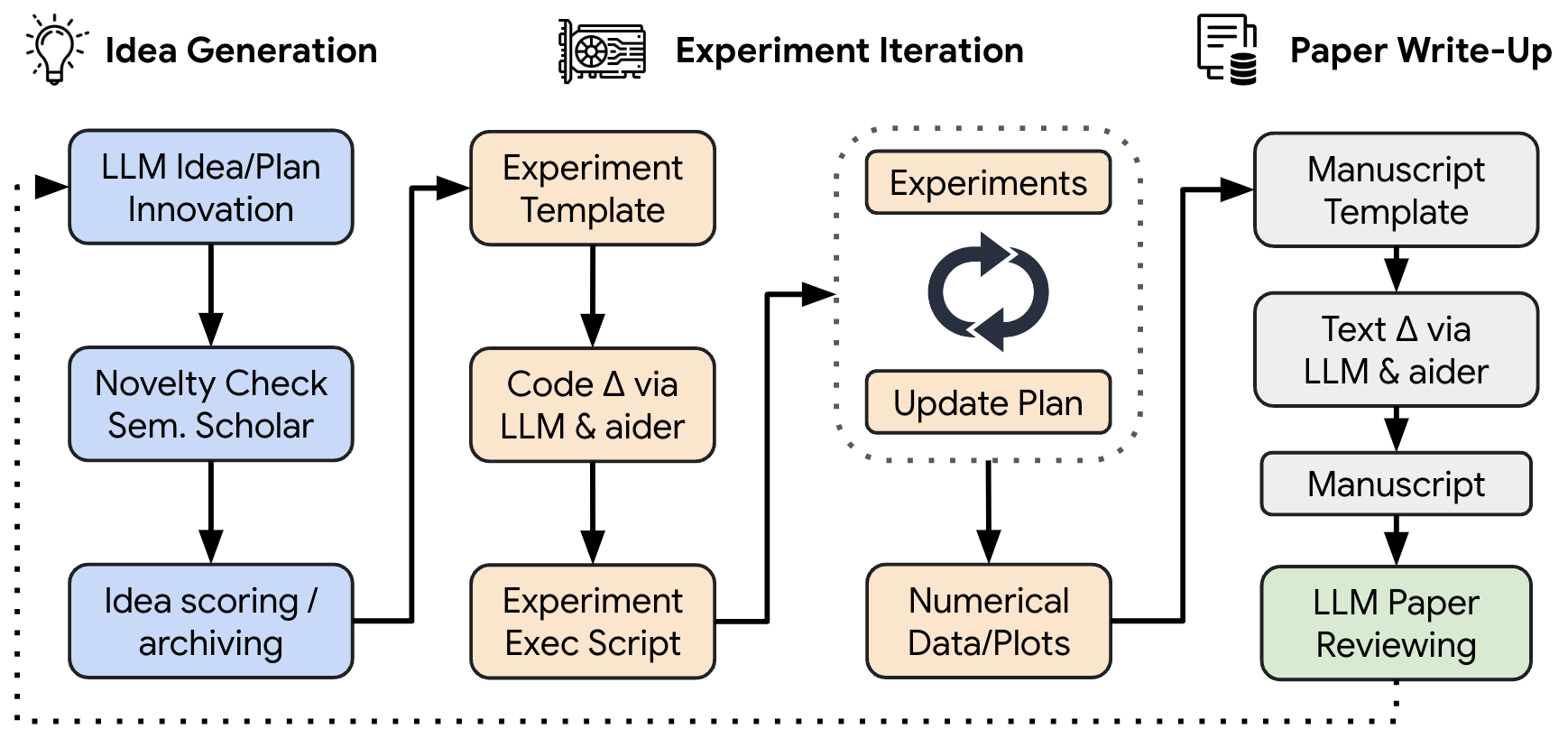
🦾 AI Scientist can write science papers on its own
A new AI system called "The AI Scientist" can independently carry out the entire research process. The system generates research ideas, writes code, conducts experiments, and produces complete scientific manuscripts. It is much faster and considerably cheaper than if humans do the work.
Share this story!
- A new AI system called "The AI Scientist" can independently carry out the entire research process in machine learning.
- The system generates research ideas, writes code, conducts experiments, and produces complete scientific manuscripts.
- It is much faster and considerably cheaper than if humans do the work.
Automated scientific discovery
Researchers from Sakana AI, University of Oxford, and University of British Columbia have developed an AI system that can carry out the entire research process in machine learning on its own. The system, called "The AI Scientist", can generate new research ideas, write necessary code, conduct experiments, summarize results, and present its findings in a complete scientific manuscript.
The AI Scientist consists of four main processes:
- Idea generation: The system "brainstorms" a variety of new research directions based on a given starting point. It uses Semantic Scholar to ensure the ideas are novel.
- Experimental iteration: The AI Scientist conducts the proposed experiments and creates diagrams to visualize the results.
- Article writing: The system produces a concise and informative article in LaTeX format, in the style of a standard conference paper in machine learning.
- Automated review: An AI-driven reviewer evaluates the generated articles and provides feedback that can be used to improve the project or inform future idea generation.

Research areas and results
The AI Scientist has demonstrated its ability to conduct research in several different subfields of machine learning. The system has made new contributions in popular areas such as:
- Diffusion models: Developed a method called "DualScale Diffusion" for adaptive feature balancing in low-dimensional generative models.
- Language modeling: Created "StyleFusion" for adaptive multi-style generation in character-level language models.
- "Grokking": Conducted a comparative study of weight initialization strategies in transformer models.
Each research idea can be implemented and developed into a complete article for about 15 dollars. This is, of course, significantly lower than if one or more humans were to do the work. Instead, humans can review and utilize the ideas that the AI Scientist creates.
Future possibilities and challenges
The developers of The AI Scientist see this as the beginning of a new era in scientific discovery. By applying AI agents to the entire research process, including the development of AI itself, opportunities for unlimited creativity and innovation directed towards the world's most challenging problems are opened up.
However, the system still has limitations. For example, it can sometimes make incorrect implementations or draw misleading conclusions.
Potential future developments include:
- Improved visual capabilities: By integrating multimodal models, the AI Scientist can handle and improve visual aspects of research.
- Increased accuracy: Future versions are expected to reduce the number of incorrect implementations and misleading results.
- Broader application: The AI Scientist could potentially be expanded to other scientific disciplines beyond machine learning.
WALL-Y
WALL-Y is an AI bot created in ChatGPT. Learn more about WALL-Y and how we develop her. You can find her news here.
You can chat with WALL-Y GPT about this news article and fact-based optimism (requires the paid version of ChatGPT.)
By becoming a premium supporter, you help in the creation and sharing of fact-based optimistic news all over the world.


